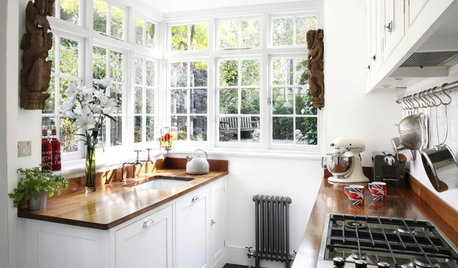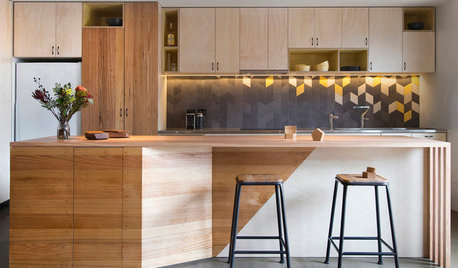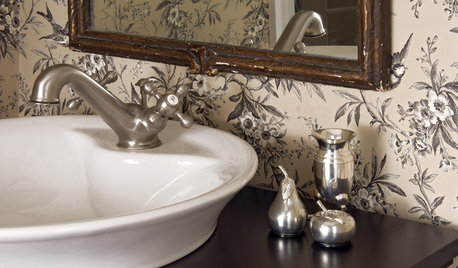Don't think they are going to make it
tranger2
14 years ago
Related Stories

BEDROOMS11 Things You Didn’t Think You Could Fit Into a Small Bedroom
Clever designers have found ways to fit storage, murals and even chandeliers into these tight sleeping spaces
Full Story
SMALL KITCHENS10 Things You Didn't Think Would Fit in a Small Kitchen
Don't assume you have to do without those windows, that island, a home office space, your prized collections or an eat-in nook
Full Story
DECORATING GUIDESHow to Go Geometric Without Going Overboard
If your home decorating isn’t adding up, consider angles and shapes to help solve the equation
Full Story
LIVING ROOMSNew This Week: 5 Fully Decorated Living Rooms That Don’t Go Overboard
See how designers filled these recently uploaded spaces with the right amount of furniture and accessories
Full Story
GARDENING GUIDESNew Ways to Think About All That Mulch in the Garden
Before you go making a mountain out of a mulch hill, learn the facts about what your plants and soil really want
Full Story
BATHROOM DESIGN10 Ways to Think Outside the Bathroom Sink Box
A Better Bathroom Sink: Go Stainless, Go Big, Go Sculptural
Full Story
MOST POPULAR5 Remodels That Make Good Resale Value Sense — and 5 That Don’t
Find out which projects offer the best return on your investment dollars
Full Story
WALL TREATMENTSCan't Find the Right Wallpaper? Make Your Own
For one-of-a-kind walls, just use your imagination. Custom wallpaper is easier and less expensive than you might expect
Full Story
GARDENING AND LANDSCAPINGHow to Make a Pond
You can make an outdoor fish paradise of your own, for less than you might think. But you'll need this expert design wisdom
Full Story







Okiedawn OK Zone 7
tranger2Original Author
Related Professionals
Chattanooga Landscape Architects & Landscape Designers · Ferndale Landscape Architects & Landscape Designers · Alexandria Landscape Contractors · Matthews Landscape Contractors · Chelmsford Landscape Contractors · Mission Viejo Landscape Contractors · Saint John Landscape Contractors · Setauket-East Setauket Landscape Contractors · Algonquin Decks, Patios & Outdoor Enclosures · Baton Rouge Decks, Patios & Outdoor Enclosures · Centennial Decks, Patios & Outdoor Enclosures · Del City Decks, Patios & Outdoor Enclosures · Glendale Decks, Patios & Outdoor Enclosures · Lenoir Decks, Patios & Outdoor Enclosures · Monroeville Decks, Patios & Outdoor Enclosuresmulberryknob
gldno1
tranger2Original Author
Okiedawn OK Zone 7
mulberryknob
tranger2Original Author
Okiedawn OK Zone 7